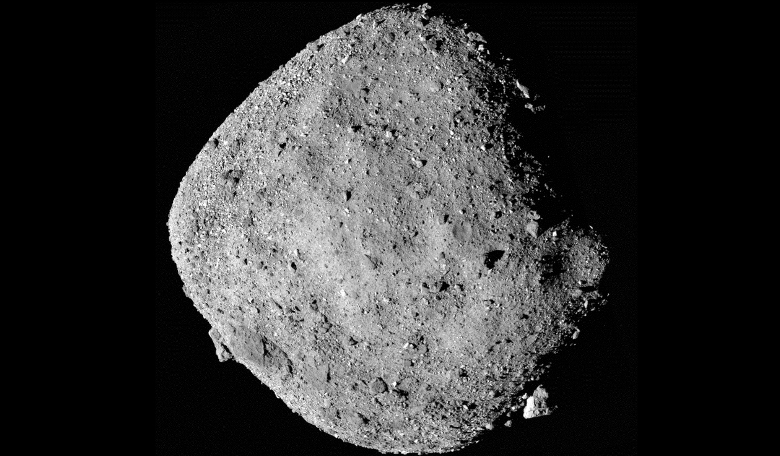Having arrived at its destination less than 10 days ago, NASA’s OSIRIS-REx spacecraft has already found the ingredients for water on Bennu – an indication that the much larger asteroid it broke apart from eons ago had liquid water present on it at some point.
Recently analysed data obtained from the spacecraft’s two spectrometers, the OSIRIS-REx Visible and Infrared Spectrometer (OVIRS) and the OSIRIS-REx Thermal Emission Spectrometer (OTES), have revealed the presence of hydroxyls; a type of molecule made up from an oxygen atom bonded to a hydrogen atom that together form OH.
Although not quite the formula for water (that requires an additional hydrogen atom), these hydroxyls are suspected to exist globally across the asteroid in water-bearing clay minerals.
“The presence of hydrated minerals across the asteroid confirms that Bennu, a remnant from early in the formation of the solar system, is an excellent specimen for the OSIRIS-REx mission to study the composition of primitive volatiles and organics,” said Amy Simon, OVIRS deputy instrument scientist at NASA’s Goddard Space Flight Center in Greenbelt, Maryland.
“When samples of this material are returned by the mission to Earth in 2023, scientists will receive a treasure trove of new information about the history and evolution of our solar system.”
OSIRIS-REx is currently surveying the boulder-strewn asteroid at ranges as close as seven kilometres (4.4 miles) to calculate its mass. An accurate determination of the mass is needed to help understand the asteroid’s structure and composition but more importantly to ensure that the spacecraft is inserted into the right orbit and is not unexpectedly pulled towards Bennu because of a miscalculation in the pair’s mutual gravitational attraction.
The spacecraft’s first orbital insertion is scheduled for 31 December, when its first close inspection of this relatively pristine remnant rock, takes it within a range of 1.4 kilometres (0.9 miles) to two kilometres (1.24 miles) from the centre of Bennu.
OSIRIS-REx will remain in orbit close to the asteroid until mid-February 2019, when it pulls away to initiate another series of flybys for the next survey phase.
The Camera Suite (OCAMS) aboard OSIRIS-REx has also been used to corroborate ground-based telescopic observations of the asteroid and to confirm that model predictions of Bennu’s actual shape, diameter, rotation rate, and inclination constructed back in 2013, agree with actual face-to-face results.
One distinguishing feature picked up by OCAMS is of a large boulder 50 meters (164 feet) in height and approximately 55 meters (180 feet) in width that sticks out from Bennu’s south pole. Models predicted the boulder to be much smaller – around 10 metres (33 feet) in height, but as it protrudes much further out from the surface than expected, it is now a known hazard that can avoided when the spacecraft swoops in low to take a closer look.
“Our initial data show that the team picked the right asteroid as the target of the OSIRIS-REx mission. We have not discovered any insurmountable issues at Bennu so far,” said Dante Lauretta, OSIRIS-REx principal investigator at the University of Arizona, Tucson. “The spacecraft is healthy and the science instruments are working better than required. It is time now for our adventure to begin.”











